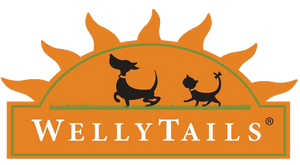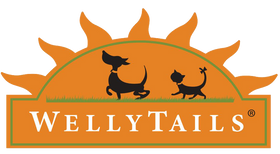5 Must Know Critical Issues With Fish Oil For Pets
5 Must Know Critical Issues With Fish Oil For Pets

Critical General Fish Oil Information:
Where do we get Omega-3 from?
Long-chain omega-3s EPA and DHA are found typically in fatty fish such as mackerel, salmon, herring, sardines, sablefish (black cod), anchovies, albacore tuna, menhaden. Also special marine algae.
Short-chain omega-3 ALA is found abundantly in flax seed, chia seed, and hemp seeds.
My dog’s food already states it has omega-3 for skin and coat so why am I not seeing improvement?
Most likely the source of the omega-3 is plant based short-chain omega-3 ALA, most likely ground flax seed. Or it may have a very low amount of long-chain omaga-3s EPA & DHA as these are costly and very difficult to keep from becoming rancid and providing nasty off flavors in the dog food.
Best to use a high quality FRESH FISH OIL as a dietary supplement. Dose is calculated at total long-chain omega-3s EPA and DHA total of 10 to 20 mg active per pound of body weight. 50 pound dog needs 500 to 1000 mg combined of EPA & DHA. Each dog will have a different need depending on how much more it needs above what is supplied in the diet.
How do I figure out how much long-chain omega-3 EPA and DHA am I giving to my dog?
Many pet store fish oil labels seem to purposely confuse the issue to mask inferior or diluted products. There actually is a so called “Omega-3” pet product that is selling extremely well that is basically just soybean vegetable oil with a lovely picture of a dog on the label! It sells for $24.95 a quart meanwhile soybean oil at the local grocery store is only $5.95 for a quart. BUYER GET EDUCATED as your friendly pet store staff may themselves just not fully understand omega-3s properly.
A pet omega-3 fish oil product label may say that the dosage is 1000mg of fish oil per 20 pounds of dog weight. Thus a 60 pound dog would receive 3000mg of fish oil. Sounds like a good dose?
Scenario Standard Human Grade Fish Oil
Typically a standard high quality human grade fish oil sourced from sardines or anchovies or mackerel will have been cleaned of all contaminants and standardized for the amount of long-chain omega-3s EPA and DHA. In 1000mg of this fish oil there are 180mg of EPA and 120mg of DHA = 300mg of long-chain omega-3s. Most often this fish oil active ingredients are expressed as a 180:120 fish oil. Thus 180mg EPA + 120mg DHA = 300mg active ingredients per 1000mg of fish oil which works out to 30% active ingredients [{300mg EPA+DHA divided by 1000mg fish oil} times 100] in 1000mg of fish oil.
Now let’s calculate how much EPA + DHA that 60 pound dog is getting from 3000mg of fish oil.
3000mg standard 180:120 fish oil x 0.30 = 900mg of EPA + DHA active ingredient dosed
Scenario Wild Alaskan Salmon Oil
A pet omega-3 Wild Alaskan Salmon fish oil product label may say that there are TOTAL of 290mg of omega-3s per 1000 mg of the oil. The label directs that dosage is 1000 mg of fish oil per 20 pounds of dog weight. Thus a 60 pound dog would receive 3000mg of Wild Alaskan fish oil and thus 870mg of TOTAL OMEGA-3s. Sounds like a good dose HOWEVER IS IT REALLY?
Typically a standard WILD ALASKAN SALMON OIL of very high quality human grade will have been cleaned of all contaminants and standardized for the amount of long-chain omega-3s EPA and DHA. Typically Wild Alaskan Salmon will have slightly less EPA than DHA depending on wild salmon species harvested. On average with some seasonal variability typically in 1000mg of wild Alaskan salmon oil there are 90mg of EPA and 110mg of DHA = 200mg of long-chain omega-3s or put another ways it is an 90:110 fish oil Thus 90mg EPA+ 110mg DHA = 200mg active ingredients per 1000mg of Wild Alaskan Salmon oil which works out to 20%active ingredients (200mg of EPA+DHA divided by 1000mg fish oil).
Now let’s calculate how much EPA +DHA that 60 pound dog is getting from 3000mg of fish oil.
3000mg of standard 90:110 Wild Alaskan Salmon oil x 0.20 = 600mg of EPA + DHA active ingredient dosed
Wild Alaskan Salmon oil is delivering 30% LESS EPA + DHA omega-3 active ingredients compared to regular standard human grade 180:120 fish oils.
Pet parents and pet store staff are very often confused by the Wild Alaskan Salmon oil label that highlights TOTAL omega-3s (there are several different kinds of omega3s in fish oils) versus clearly listing the amounts of active ingredients.
Human grade Wild Alaskan Salmon oil is typically more expensive than standard human grade fish oil and given that it delivers 30% less active EPA +DHA omega-3s it works out to be a very expensive choice of fish oil to use.


Leave a comment